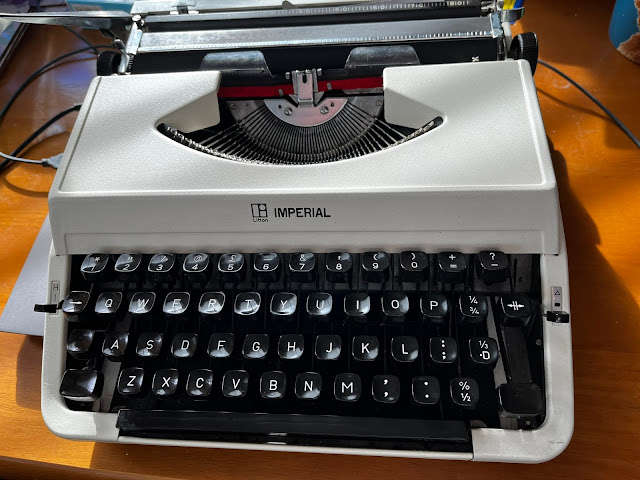Someone more used to a microcomputer keyboard than a typewriter, will find the inclusion of various symbols on a typewriter somewhat mysterious or confusing, as we are exploring in this series. They may find what is NOT included even more mysterious. Many typewriters, especially portables such as my Silver-Reed SEVENTY (as shown below) do not have the number 1!
Space was a premium on a typewriter keyboard. Unlike a microcomputer, each key cannot have extra characters and symbols mapped to it after the fact, you are largely stuck with what you have when the typewriter was bought (though the typewriter could be modified if your need/budget was big enough).
With limited space, especially for hammers, the number 1 is an easy one to miss out even though you would think it would be pretty fundamental. This is because a lowercase l works pretty well as a 1. You can also use a capital I perhaps though a lowercase l more looks the part. Not all portable typewriters lack a number 1 but many do.











